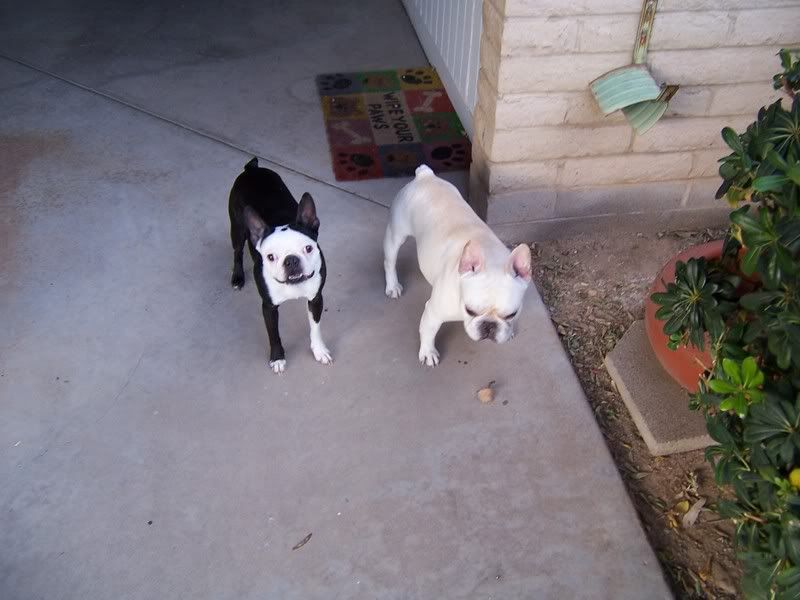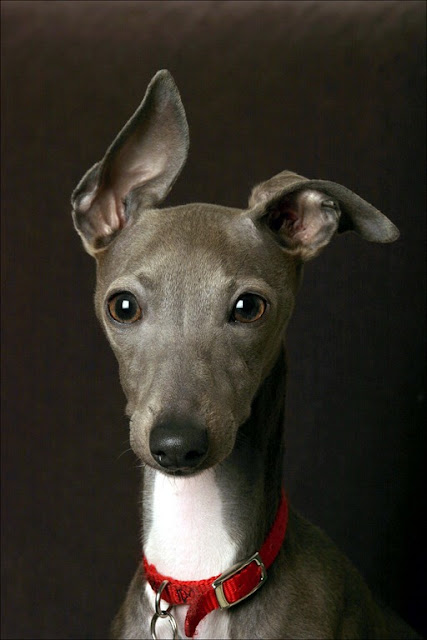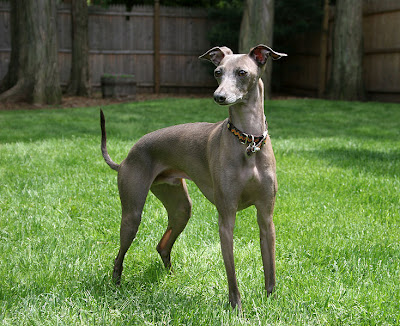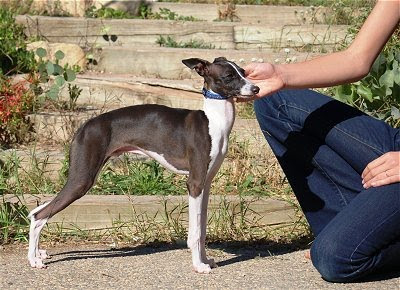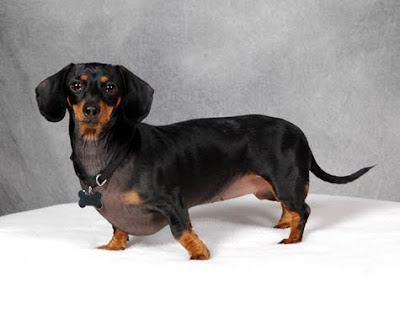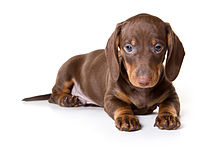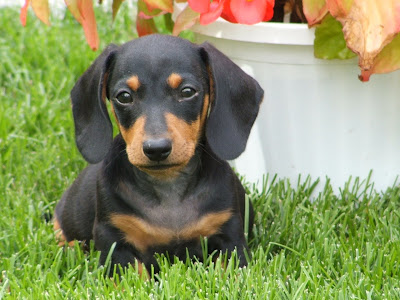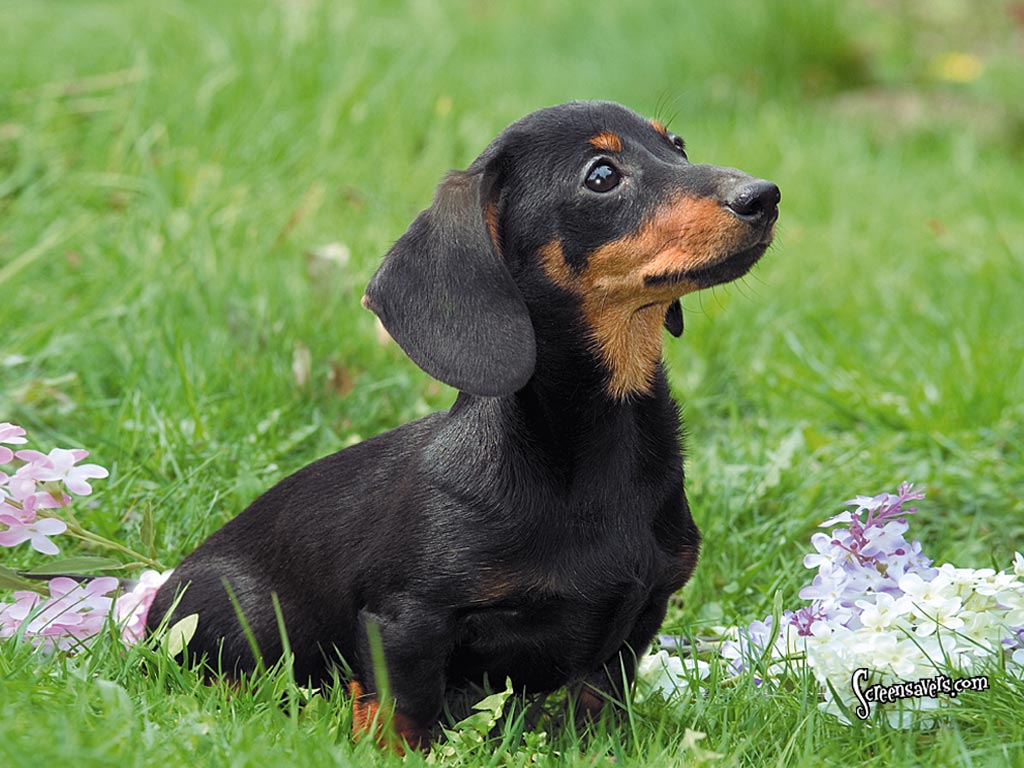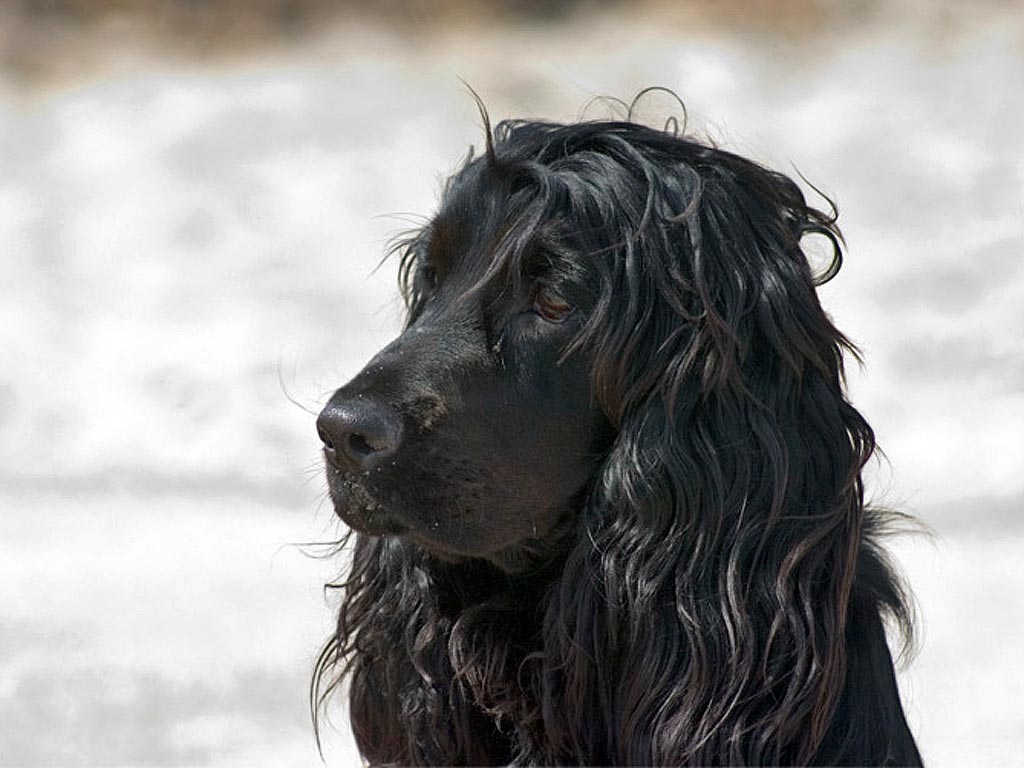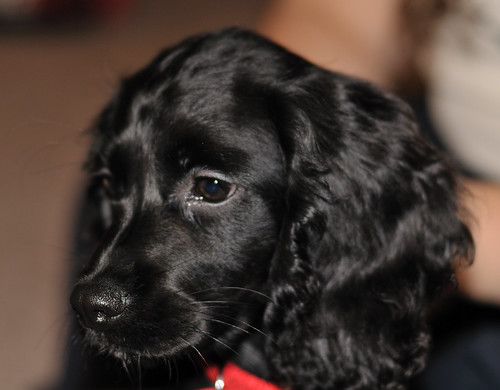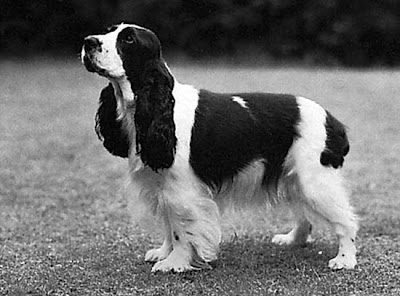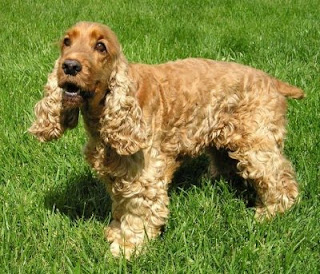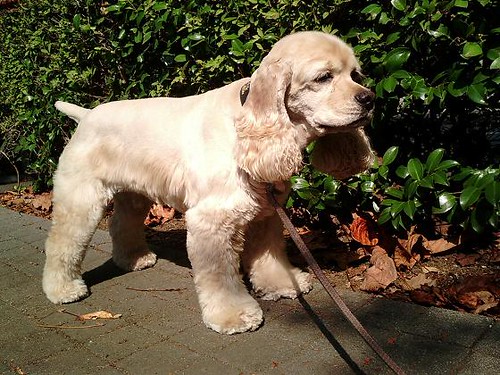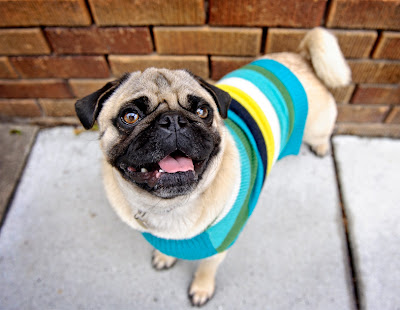Panda Dog
Boston Terrier vs French Bulldog
What do a smart stylish dog and a sweet natured clown dog have in common? Beside their batlike ears, Boston terriers and French bulldogs also share the same forefather—Bulldog. On appearance and temperament, they do share many similar qualities however they require different type of owner. Both Bostons and Frenchies are great people pleasers however Bostons are ideal family dogs while Frenchies are more of the monogamy type (only bond with one person) of dogs.
This is not to say you can’t have one of each living in the same household. You may need to make some adjustments and give proper trainings.
Boston Terrier vs. French Bulldog
| Breed | Boston Terrier | French Bulldog |
| Country of Origin | United States | France |
| AKC / KC Groups | Non-Sporting Group / Utility Group | Non-Sporting Group / Utility Group |
| Original Function | Companion | Companion |
French bulldog
Physical Appearance
| Coat Color | Brindle, seal, or black with even white markings—should be on muzzle, between eyes, blaze collar, forechest, and part or whole of forelegs and hindlegs. | Brindle, fawn, or pied (predominantly white with brindle markings. |
| Coat Type | Short and smooth | Short, soft, and close lying |
| Head | Square wrinkle free skull, jaw, and muzzle. The muzzle is deep and short, with a black nose. | Very large, with a pushed-in muscular appearance and wrinkle skin. The upper lip hang low over the sides of the lower jaw. |
| Eyes | Large, round, and set wide apart. Dark brown in color. | Set low and far apart. Round and very dark brown. |
| Ears | Small, thin, erect, and set at the corners of the skull. | Big batlike ears but thin in texture. |
| Body | Compact and quite muscular with a short back and loins. Chest is deep and wide. | Wide body, heavy bone, muscular build. Deep chest and short back, arched over narrow loins and hindquarters. |
| Tail | Set and carried low. Short and either straight or twisted. | Set and carried low. Tapers rapidly to a point from a wide base. |
| Height | 15 – 17 inches | 11 – 13 inches |
| Weight | 10 – 25 lbs. Three groups—15 lbs and under, 15 – 20 lbs, and up to 25 lbs. | 24 – 28 lbs |
Temperament, Needs, and Learning
| Overall Temperament | Very affectionate, lively, and intelligent. | Deeply affectionate, Sweet, amiable, easy going, adaptable |
| General Activity | Moderate | Moderately low |
| Exercise Requirement | Needs daily exercises consist of short walks and free romp either indoor or in the yard. | Moderate. Short walks and romp in the park |
| Grooming Requirement | It’s an easy care coat with minimal shedding, needs only weekly brushing to remove dead hair. The face should be cleaned daily with a damp washcloth. | It’s an easy care coat with minimal shedding, needs only weekly brushing to remove dead hair. The face should be cleaned daily with a damp washcloth. |
| Ideal Home Environment | Due to its compact size, Boston terrier is an idea companion for city dwellers. However, he’s willing to stay with any homeowners who’d offer a spacious and shady yard. | Very flexible dog. Apartment or house with a shady yard. |
| Ideal Owner | Owner with a semi-active lifestyle. Must be affectionate, gentle, and patient. i.e. family with children and elderly. | Frenchies need human companionship constantly. A “monogamy” kind of dog. Seniors or SOHOs or owners who can take dogs to work. |
| Special Needs | Can be very vocal. So early training is advisable. | Can become a couch potato. So give plenty of mental and short duration of physical activities. |
| Intelligence / Ranking | Moderate / ranked no.54 | Moderately low / rank no.58 |
| Trainability | Very strong-minded and a little stubborn but learn readily. Will only engage in activities that appear fun and interesting to them. | Quite easy to train (if you make the training more like games) as long as you don’t expect collie-style of intelligent and standards. |
| Cold / Heat Tolerance | Extremely low / extremely low | moderately low / extremely low |
Behavior
| Excitability | Moderate | Low |
| Playfulness | High. Loves games and people pleaser. | Moderate |
| Demand for Affection | Moderately high. | High |
| Watchdog Barking | Excellent barker (on demand). Love the sound of his own voice yet quiet at the same time. | Low |
| Protection | Low | Low |
| Dominance Over Owner | Low | Low |
| Good With Dogs | Great with other dogs at home but sometimes may be aggressive toward strange dogs. | Moderately well. However, some males can be very territorial. |
| Good With Pets | Moderately well. | Excellent. Occasionally may chase cats. |
| Good With Children | Get along very well with children of any age group. | Moderately well. If your Frenchie is devoted to you, he may not be so willing to take commands from your children or vice versa. |
| Good With Strangers | Reserved | Very reserved. |
| Problematic Areas | Like all brachycephalic (short-faced) breeds, Bostons may have breathing difficulties when exposed to heat or over exertion. | Similar to Bostons and all short-nosed breeds, Frenchies snore and may wheeze and drool. |
Health
| Life Span | 12 – 16 years | 11 – 12 years |
| Major Aliments | Brachycephalic syndrome | Brachycephalic syndrome, spinal disc trouble |
| Minor Aliments | Patellar luxation, allergies | Patellar luxation, hemivertebra |
| Recommended Food | Beef, fish | Beef, wheat, oats |
Source: www.smalldogsparadise.com
Italian Greyhound Dog Breed Standard
Italian Greyhound Dog
The Italian Greyhound is extremely slender and barely over a foot tall, but has all the grace and sweetness of his taller Greyhound relatives. There is debate as to whether they were originally bred for hunting small game or meant to be simply a companion. In all likelihood, both are true, as they are adaptable to city and country life. The Italian Greyhound’s coat can be any color, except brindle and classic black and tan.
A Look Back
As with many ancient breeds, their depiction in art and architecture provides insight into their origin. Miniature greyhounds appear in ancient decorative arts of the Mediterranean countries dating back 2000 years. During the Renaissance, Italian noblemen adopted the breed as their own and it became known as the Italian Greyhound. The breed made its way to England in the seventeenth century, gaining steadily in popularity.
Right Breed for You?
Playful and intelligent, the Italian Greyhound is generally easy to train and prefers to spend most of his time with his owner. They like attention and affection, and are a peaceful, gentle friend to adults and children. Italian Greyhounds are an active breed that loves to run and play and requires daily walks. Their small size makes them ideal for an apartment and his short, smooth as satin coat makes him one of the easiest breeds to groom.
Description
The Italian Greyhound is very similar to the Greyhound, but much smaller and more slender in all proportions and of ideal elegance and grace.
Head
Narrow and long, tapering to nose, with a slight suggestion of stop. Skull Rather long, almost flat. Muzzle Long and fine. Nose Dark. It may be black or brown or in keeping with the color of the dog. A light or partly pigmented nose is a fault. Teeth Scissors bite. A badly undershot or overshot mouth is a fault. Eyes Dark, bright, intelligent, medium in size. Very light eyes are a fault. Ears Small, fine in texture; thrown back and folded except when alerted, then carried folded at right angles to the head. Erect or button ears severely penalized.
Neck
Long, slender and gracefully arched.
Body
Of medium length, short coupled; high at withers, back curved and drooping at hindquarters, the highest point of curve at start of loin, creating a definite tuck-up at flanks.
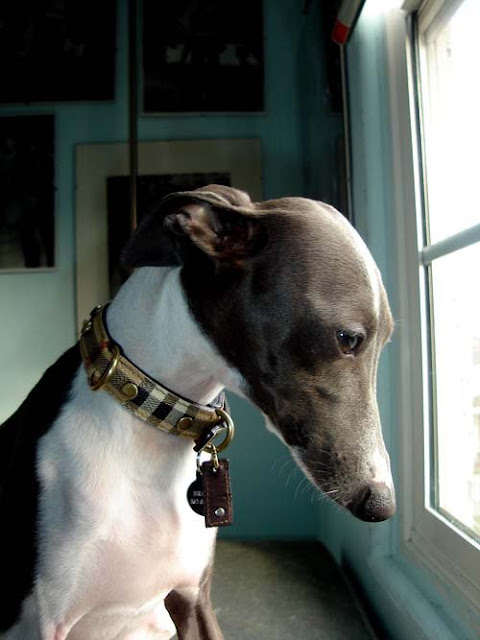
Shoulders
Long and sloping.
Chest
Deep and narrow.
Forelegs
Long, straight, set well under shoulder; strong pasterns, fine bone.
Hindquarters
Long, well-muscled thigh; hind legs parallel when viewed from behind, hocks well let down, well-bent stifle.
Feet
Harefoot with well-arched toes. Removal of dewclaws optional.
Tail
Slender and tapering to a curved end, long enough to reach the hock; set low, carried low. Ring tail a serious fault, gay tail a fault.
Coat
Skin fine and supple, hair short, glossy like satin and soft to the touch.
Color
Any color and markings are acceptable except that a dog with brindle markings and a dog with the tan markings normally found on black-and-tan dogs of other breeds must be disqualified.
Action
High stepping and free, front and hind legs to move forward in a straight line.
Size
Height at withers, ideally 13 inches to 15 inches.
Disqualifications
A dog with brindle markings. A dog with the tan markings normally found on black-and-tan dogs of other breeds.

Approved December 14, 1976 by AKC
The everything Chihuahua book: a complete guide to raising, training, and caring for your Chihuahua
Both boxers and chihuahuas are on the AKC Top 10 Most Popular Dogs list - Written by breed-specific experts Karla Spitzer and Joan Hustace Walker The Everything Chihuahua Book is an all-encompassing guide to this popular dog! Pet expert Joan Hustace Walker helps readers learn the basics of this little and lively breed, including temperament, housetraining, and obedience. Includes advice and instruction on how to: - Find a reputable breeder - Groom like a pro - Ensure good nutrition - Care for an older chihuahua
Dogs 101: Lhasa Apso - Video
Dachshund Dog Breed Standard
Dachshund Dog
General Appearance
Low to ground, long in body and short of leg, with robust muscular development; the skin is elastic and pliable without excessive wrinkling. Appearing neither crippled, awkward, nor cramped in his capacity for movement, the Dachshund is well-balanced with bold and confident head carriage and intelligent, alert facial expression. His hunting spirit, good nose, loud tongue and distinctive build make him well-suited for below-ground work and for beating the bush. His keen nose gives him an advantage over most other breeds for trailing. NOTE: Inasmuch as the Dachshund is a hunting dog, scars from honorable wounds shall not be considered a fault.
Size, Proportion, Substance
Bred and shown in two sizes, standard and miniature; miniatures are not a separate classification but compete in a class division for "11 pounds and under at 12 months of age and older." Weight of the standard size is usually between 16 and 32 pounds.
Bred and shown in two sizes, standard and miniature; miniatures are not a separate classification but compete in a class division for "11 pounds and under at 12 months of age and older." Weight of the standard size is usually between 16 and 32 pounds.
Head
Viewed from above or from the side, the head tapers uniformly to the tip of the nose. The eyes are of medium size, almond-shaped and dark-rimmed, with an energetic, pleasant expression; not piercing; very dark in color. The bridge bones over the eyes are strongly prominent. Wall eyes, except in the case of dappled dogs, are a serious fault. The ears are set near the top of the head, not too far forward, of moderate length, rounded, not narrow, pointed, or folded. Their carriage, when animated, is with the forward edge just touching the cheek so that the ears frame the face. The skull is slightly arched, neither too broad nor too narrow, and slopes gradually with little perceptible stop into the finely-formed, slightly arched muzzle, giving a Roman appearance. Lips are tightly stretched, well covering the lower jaw. Nostrils well open. Jaws opening wide and hinged well back of the eyes, with strongly developed bones and teeth. Teeth-Powerful canine teeth; teeth fit closely together in a scissors bite. An even bite is a minor fault. Any other deviation is a serious fault.
Viewed from above or from the side, the head tapers uniformly to the tip of the nose. The eyes are of medium size, almond-shaped and dark-rimmed, with an energetic, pleasant expression; not piercing; very dark in color. The bridge bones over the eyes are strongly prominent. Wall eyes, except in the case of dappled dogs, are a serious fault. The ears are set near the top of the head, not too far forward, of moderate length, rounded, not narrow, pointed, or folded. Their carriage, when animated, is with the forward edge just touching the cheek so that the ears frame the face. The skull is slightly arched, neither too broad nor too narrow, and slopes gradually with little perceptible stop into the finely-formed, slightly arched muzzle, giving a Roman appearance. Lips are tightly stretched, well covering the lower jaw. Nostrils well open. Jaws opening wide and hinged well back of the eyes, with strongly developed bones and teeth. Teeth-Powerful canine teeth; teeth fit closely together in a scissors bite. An even bite is a minor fault. Any other deviation is a serious fault.
Neck
Long, muscular, clean-cut, without dewlap, slightly arched in the nape, flowing gracefully into the shoulders without creating the impression of a right angle.
Long, muscular, clean-cut, without dewlap, slightly arched in the nape, flowing gracefully into the shoulders without creating the impression of a right angle.
Trunk
The trunk is long and fully muscled. When viewed in profile, the back lies in the straightest possible line between the withers and the short, very slightly arched loin. A body that hangs loosely between the shoulders is a serious fault. Abdomen-Slightly drawn up.
The trunk is long and fully muscled. When viewed in profile, the back lies in the straightest possible line between the withers and the short, very slightly arched loin. A body that hangs loosely between the shoulders is a serious fault. Abdomen-Slightly drawn up.
Forequarters
For effective underground work, the front must be strong, deep, long and cleanly muscled. Forequarters in detail: Chest -The breast-bone is strongly prominent in front so that on either side a depression or dimple appears. When viewed from the front, the thorax appears oval and extends downward to the mid-point of the forearm. The enclosing structure of the well-sprung ribs appears full and oval to allow, by its ample capacity, complete development of heart and lungs. The keel merges gradually into the line of the abdomen and extends well beyond the front legs. Viewed in profile, the lowest point of the breast line is covered by the front leg. Shoulder blades-long, broad, well-laid back and firmly placed upon the fully developed thorax, closely fitted at the withers, furnished with hard yet pliable muscles. Upper Arm-Ideally the same length as the shoulder blade and at right angles to the latter, strong of bone and hard of muscle, lying close to the ribs, with elbows close to the body, yet capable of free movement. Forearm–Short; supplied with hard yet pliable muscles on the front and outside, with tightly stretched tendons on the inside and at the back, slightly curved inwards. The joints between the forearms and the feet (wrists) are closer together than the shoulder joints, so that the front does not appear absolutely straight. The inclined shoulder blades, upper arms and curved forearms form parentheses that enclose the ribcage, creating the correct “wraparound front.” Knuckling over is a disqualifying fault. Feet-Front paws are full, tight, compact, with well-arched toes and tough, thick pads. They may be equally inclined a trifle outward. There are five toes, four in use, close together with a pronounced arch and strong, short nails. Front dewclaws may be removed.
For effective underground work, the front must be strong, deep, long and cleanly muscled. Forequarters in detail: Chest -The breast-bone is strongly prominent in front so that on either side a depression or dimple appears. When viewed from the front, the thorax appears oval and extends downward to the mid-point of the forearm. The enclosing structure of the well-sprung ribs appears full and oval to allow, by its ample capacity, complete development of heart and lungs. The keel merges gradually into the line of the abdomen and extends well beyond the front legs. Viewed in profile, the lowest point of the breast line is covered by the front leg. Shoulder blades-long, broad, well-laid back and firmly placed upon the fully developed thorax, closely fitted at the withers, furnished with hard yet pliable muscles. Upper Arm-Ideally the same length as the shoulder blade and at right angles to the latter, strong of bone and hard of muscle, lying close to the ribs, with elbows close to the body, yet capable of free movement. Forearm–Short; supplied with hard yet pliable muscles on the front and outside, with tightly stretched tendons on the inside and at the back, slightly curved inwards. The joints between the forearms and the feet (wrists) are closer together than the shoulder joints, so that the front does not appear absolutely straight. The inclined shoulder blades, upper arms and curved forearms form parentheses that enclose the ribcage, creating the correct “wraparound front.” Knuckling over is a disqualifying fault. Feet-Front paws are full, tight, compact, with well-arched toes and tough, thick pads. They may be equally inclined a trifle outward. There are five toes, four in use, close together with a pronounced arch and strong, short nails. Front dewclaws may be removed.
Hindquarters
Strong and cleanly muscled. The pelvis, the thigh, the second thigh, and the rear pastern are ideally the same length and give the appearance of a series of right angles. From the rear, the thighs are strong and powerful. The legs turn neither in nor out. Rear pasterns - Short and strong, perpendicular to the second thigh bone. When viewed from behind, they are upright and parallel. Feet-Hind Paws - Smaller than the front paws with four compactly closed and arched toes with tough, thick pads. The entire foot points straight ahead and is balanced equally on the ball and not merely on the toes. Rear dewclaws should be removed.Croup- Long, rounded and full, sinking slightly toward the tail. Tail-Set in continuation of the spine, extending without kinks, twists, or pronounced curvature, and not carried too gaily.
Strong and cleanly muscled. The pelvis, the thigh, the second thigh, and the rear pastern are ideally the same length and give the appearance of a series of right angles. From the rear, the thighs are strong and powerful. The legs turn neither in nor out. Rear pasterns - Short and strong, perpendicular to the second thigh bone. When viewed from behind, they are upright and parallel. Feet-Hind Paws - Smaller than the front paws with four compactly closed and arched toes with tough, thick pads. The entire foot points straight ahead and is balanced equally on the ball and not merely on the toes. Rear dewclaws should be removed.Croup- Long, rounded and full, sinking slightly toward the tail. Tail-Set in continuation of the spine, extending without kinks, twists, or pronounced curvature, and not carried too gaily.
Gait
Fluid and smooth. Forelegs reach well forward, without much lift, in unison with the driving action of hind legs. The correct shoulder assembly and well-fitted elbows allow the long, free stride in front. Viewed from the front, the legs do not move in exact parallel planes, but incline slightly inward. Hind legs drive on a line with the forelegs, with hock joints and rear pasterns (metatarsus) turning neither in nor out. The propulsion of the hind leg depends on the dog’s ability to carry the hind leg to complete extension. Viewed in profile, the forward reach of the hind leg equals the rear extension. The thrust of correct movement is seen when the rear pads are clearly exposed during rear extension. Rear feet do not reach upward toward the abdomen and there is no appearance of walking on the rear pasterns.Feet must travel parallel to the line of motion with no tendency to swing out, cross over, or interfere with each other. Short, choppy movement, rolling or high-stepping gait, close or overly wide coming or going are incorrect. The Dachshund must have agility, freedom of movement, and endurance to do the work for which he was developed.
Fluid and smooth. Forelegs reach well forward, without much lift, in unison with the driving action of hind legs. The correct shoulder assembly and well-fitted elbows allow the long, free stride in front. Viewed from the front, the legs do not move in exact parallel planes, but incline slightly inward. Hind legs drive on a line with the forelegs, with hock joints and rear pasterns (metatarsus) turning neither in nor out. The propulsion of the hind leg depends on the dog’s ability to carry the hind leg to complete extension. Viewed in profile, the forward reach of the hind leg equals the rear extension. The thrust of correct movement is seen when the rear pads are clearly exposed during rear extension. Rear feet do not reach upward toward the abdomen and there is no appearance of walking on the rear pasterns.Feet must travel parallel to the line of motion with no tendency to swing out, cross over, or interfere with each other. Short, choppy movement, rolling or high-stepping gait, close or overly wide coming or going are incorrect. The Dachshund must have agility, freedom of movement, and endurance to do the work for which he was developed.
Temperament
The Dachshund is clever, lively and courageous to the point of rashness, persevering in above- and below-ground work, with all the senses well-developed. Any display of shyness is a serious fault.
The Dachshund is clever, lively and courageous to the point of rashness, persevering in above- and below-ground work, with all the senses well-developed. Any display of shyness is a serious fault.
Special Characteristics of the Three Coat Varieties
The Dachshund is bred with three varieties of coat: (1) Smooth; (2) Wirehaired; (3) Longhaired and is shown in two sizes, standard and miniature. All three varieties and both sizes must conform to the characteristics already specified. The following features are applicable for each variety:
The Dachshund is bred with three varieties of coat: (1) Smooth; (2) Wirehaired; (3) Longhaired and is shown in two sizes, standard and miniature. All three varieties and both sizes must conform to the characteristics already specified. The following features are applicable for each variety:
Smooth Dachshund

Coat-Short, smooth and shining. Should be neither too long nor too thick. Ears not leathery. Tail-Gradually tapered to a point, well but not too richly haired. Long sleek bristles on the underside are considered a patch of strong-growing hair, not a fault. A brush tail is a fault, as is also a partly or wholly hairless tail.

Coat-Short, smooth and shining. Should be neither too long nor too thick. Ears not leathery. Tail-Gradually tapered to a point, well but not too richly haired. Long sleek bristles on the underside are considered a patch of strong-growing hair, not a fault. A brush tail is a fault, as is also a partly or wholly hairless tail.
Color of Hair-Although base color is immaterial, certain patterns and basic colors predominate. One-colored Dachshunds include red and cream, with or without a shading of interspersed dark hairs. A small amount of white on the chest is acceptable, but not desirable. Nose and nails-black.
Two-colored Dachshunds include black, chocolate, wild boar, gray (blue) and fawn (Isabella), each with deep, rich tan or cream markings over the eyes, on the sides of the jaw and underlip, on the inner edge of the ear, front, breast, sometimes on the throat, inside and behind the front legs, on the paws and around the anus, and from there to about one-third to one-half of the length of the tail on the underside. Undue prominence of tan or cream markings is undesirable. A small amount of white on the chest is acceptable but not desirable. Nose and nails-in the case of black dogs, black; for chocolate and all other colors, dark brown, but self-colored is acceptable.
Dappled dachshunds-The dapple (merle) pattern is expressed as lighter-colored areas contrasting with the darker base color, which may be any acceptable color. Neither the light nor the dark color should predominate. Nose and nails are the same as for one- and two-colored Dachshunds. Partial or wholly blue (wall) eyes are as acceptable as dark eyes. A large area of white on the chest of a dapple is permissible.
Brindle is a pattern (as opposed to a color) in which black or dark stripes occur over the entire body although in some specimens the pattern may be visible only in the tan points.
Sable-the sable pattern consists of a uniform dark overlay on red dogs. The overlay hairs are double-pigmented, with the tip of each hair much darker than the base color. The pattern usually displays a widow’s peak on the head. Nose, nails and eye rims are black. Eyes are dark, the darker the better.
Wirehaired Dachshunds
Coat-With the exception of jaw, eyebrows, and ears, the whole body is covered with a uniform tight, short, thick, rough, hard, outer coat but with finer, somewhat softer, shorter hairs (undercoat) everywhere distributed between the coarser hairs. The absence of an undercoat is a fault. The distinctive facial furnishings include a beard and eyebrows. On the ears the hair is shorter than on the body, almost smooth. The general arrangement of the hair is such that the wirehaired Dachshund, when viewed from a distance, resembles the smooth. Any sort of soft hair in the outercoat, wherever found on the body, especially on the top of the head, is a fault. The same is true of long, curly, or wavy hair, or hair that sticks out irregularly in all directions. Tail-Robust, thickly haired, gradually tapering to a point. A flag tail is a fault. Color of Hair-While the most common colors are wild boar, black and tan, and various shades of red, all colors and patterns listed aboveare admissible.
Wild boar (agouti) appears as banding of the individual hairs and imparts an overall grizzled effect which is most often seen on wirehaired Dachshunds, but may also appear on other coats. Tan points may or may not be evident. Variations include red boar and chocolate-and-tan boar. Nose, nails and eye rims are black on wild-boar and red-boar dachshunds. On chocolate-and-tan-boar dachshunds, nose, nails, eye rims and eyes are self-colored, the darker the better.
A small amount of white on the chest, although acceptable, is not desirable. Nose and nails-same as for the smooth variety.
Longhaired Dachshund
Coat - The sleek, glistening, often slightly wavy hair is longer under the neck and on forechest, the underside of the body, the ears and behind the legs. The coat gives the dog an elegant appearance. Short hair on the ear is not desirable. Too profuse a coat which masks type, equally long hair over the whole body, a curly coat, or a pronounced parting on the back are faults. Tail-Carried gracefully in prolongation of the spine; the hair attains its greatest length here and forms a veritable flag. Color of Hair-Same as for the smooth Dachshund. Nose and nails-same as for the smooth.
Coat - The sleek, glistening, often slightly wavy hair is longer under the neck and on forechest, the underside of the body, the ears and behind the legs. The coat gives the dog an elegant appearance. Short hair on the ear is not desirable. Too profuse a coat which masks type, equally long hair over the whole body, a curly coat, or a pronounced parting on the back are faults. Tail-Carried gracefully in prolongation of the spine; the hair attains its greatest length here and forms a veritable flag. Color of Hair-Same as for the smooth Dachshund. Nose and nails-same as for the smooth.
The foregoing description is that of the ideal Dachshund. Any deviation from the above described dog must be penalized to the extent of the deviation keeping in mind the importance of the contribution of the various features toward the basic original purpose of the breed.
Disqualification
Knuckling over of front legs
Knuckling over of front legs
Effective March 1, 2007
Approved January 9, 2007
Approved January 9, 2007
Cavalier King Charles Spaniel Care Video Series
Tips and tricks for dog grooming, this video focus' on how to groom the nails of a Cavalier King Charles Spaniel.
Tips and tricks for dog grooming, this video focus' on how to groom the ears of a Cavalier King Charles Spaniel.
Tips and tricks for dog grooming, this video focus' on how to groom the eyes of a Cavalier King Charles Spaniel.
Tips and tricks for dog grooming, this video focus' on how to blow dry a Cavalier King Charles Spaniel.
How to Clean the Teeth - Cavalier King Charles Spaniel
Tips and tricks for dog grooming, this video focus' on how to clean the teeth of a Cavalier King Charles Spaniel.
Tips and tricks for dog grooming, this video focus' on how to bath a Cavalier King Charles Spaniel.
Tips and tricks for dog grooming, this video focus' on how to brush a Cavalier King Charles Spaniel.
English Cocker Spaniel Breed Standard
English Cocker Spaniel Dog
General Appearance
The English Cocker Spaniel is an active, merry sporting dog, standing well up at the withers and compactly built. He is alive with energy; his gait is powerful and frictionless, capable both of covering ground effortlessly and penetrating dense cover to flush and retrieve game. His enthusiasm in the field and the incessant action of his tail while at work indicate how much he enjoys the hunting for which he was bred. His head is especially characteristic. He is, above all, a dog of balance, both standing and moving, without exaggeration in any part, the whole worth more than the sum of its parts.
Size, Proportion, Substance
Size-Height at withers: males 16 to 17 inches; females 15 to 16 inches. Deviations to be penalized. The most desirable weights: males, 28 to 34 pounds; females, 26 to 32 pounds. Proper conformation and substance should be considered more important than weight alone. Proportion--Compactly built and short-coupled, with height at withers slightly greater than the distance from withers to set-on of tail. Substance--The English Cocker is a solidly built dog with as much bone and substance as is possible without becoming cloddy or coarse.
Size-Height at withers: males 16 to 17 inches; females 15 to 16 inches. Deviations to be penalized. The most desirable weights: males, 28 to 34 pounds; females, 26 to 32 pounds. Proper conformation and substance should be considered more important than weight alone. Proportion--Compactly built and short-coupled, with height at withers slightly greater than the distance from withers to set-on of tail. Substance--The English Cocker is a solidly built dog with as much bone and substance as is possible without becoming cloddy or coarse.
Head
General appearance: strong, yet free from coarseness, softly contoured, without sharp angles. Taken as a whole, the parts combine to produce the expression distinctive of the breed. Expression--Soft, melting, yet dignified, alert, and intelligent. Eyes--The eyes are essential to the desired expression. They are medium in size, full and slightly oval; set wide apart; lids tight. Haws are inconspicuous; may be pigmented or unpigmented. Eye color dark brown, except in livers and liver parti-colors where hazel is permitted, but the darker the hazel the better. Ears--Set low, lying close to the head; leather fine, extending to the nose, well covered with long, silky, straight or slightly wavy hair. Skull--Arched and slightly flattened when seen both from the side and from the front. Viewed in profile, the brow appears not appreciably higher than the back-skull. Viewed from above, the sides of the skull are in planes roughly parallel to those of the muzzle. Stop definite, but moderate, and slightly grooved. Muzzle--Equal in length to skull; well cushioned; only as much narrower than the skull as is consistent with a full eye placement; cleanly chiseled under the eyes. Jaws strong, capable of carrying game. Nostrils wide for proper development of scenting ability; color black, except in livers and parti-colors of that shade where they will be brown; reds and parti-colors of that shade may be brown, but black is preferred. Lips square, but not pendulous or showing prominent flews. Bite--Scissors. A level bite is not preferred. Overshot or undershot to be severely penalized.
General appearance: strong, yet free from coarseness, softly contoured, without sharp angles. Taken as a whole, the parts combine to produce the expression distinctive of the breed. Expression--Soft, melting, yet dignified, alert, and intelligent. Eyes--The eyes are essential to the desired expression. They are medium in size, full and slightly oval; set wide apart; lids tight. Haws are inconspicuous; may be pigmented or unpigmented. Eye color dark brown, except in livers and liver parti-colors where hazel is permitted, but the darker the hazel the better. Ears--Set low, lying close to the head; leather fine, extending to the nose, well covered with long, silky, straight or slightly wavy hair. Skull--Arched and slightly flattened when seen both from the side and from the front. Viewed in profile, the brow appears not appreciably higher than the back-skull. Viewed from above, the sides of the skull are in planes roughly parallel to those of the muzzle. Stop definite, but moderate, and slightly grooved. Muzzle--Equal in length to skull; well cushioned; only as much narrower than the skull as is consistent with a full eye placement; cleanly chiseled under the eyes. Jaws strong, capable of carrying game. Nostrils wide for proper development of scenting ability; color black, except in livers and parti-colors of that shade where they will be brown; reds and parti-colors of that shade may be brown, but black is preferred. Lips square, but not pendulous or showing prominent flews. Bite--Scissors. A level bite is not preferred. Overshot or undershot to be severely penalized.
Neck, Topline and Body
Neck--Graceful and muscular, arched toward the head and blending cleanly, without throatiness, into sloping shoulders; moderate in length and in balance with the length and height of the dog. Topline--The line of the neck blends into the shoulder and backline in a smooth curve. The backline slopes very slightly toward a gently rounded croup, and is free from sagging or rumpiness. Body--Compact and well-knit, giving the impression of strength without heaviness. Chest deep; not so wide as to interfere with action of forelegs, nor so narrow as to allow the front to appear narrow or pinched. Forechest well developed, prosternum projecting moderately beyond shoulder points. Brisket reaches to the elbow and slopes gradually to a moderate tuck-up. Ribs well sprung and springing gradually to mid-body, tapering to back ribs which are of good depth and extend well back. Back short and strong. Loin short, broad and very slightly arched, but not enough to affect the topline appreciably. Croup gently rounded, without any tendency to fall away sharply. Tail--Docked. Set on to conform to croup. Ideally, the tail is carried horizontally and is in constant motion while the dog is in action. Under excitement, the dog may carry his tail somewhat higher, but not cocked up.
Neck--Graceful and muscular, arched toward the head and blending cleanly, without throatiness, into sloping shoulders; moderate in length and in balance with the length and height of the dog. Topline--The line of the neck blends into the shoulder and backline in a smooth curve. The backline slopes very slightly toward a gently rounded croup, and is free from sagging or rumpiness. Body--Compact and well-knit, giving the impression of strength without heaviness. Chest deep; not so wide as to interfere with action of forelegs, nor so narrow as to allow the front to appear narrow or pinched. Forechest well developed, prosternum projecting moderately beyond shoulder points. Brisket reaches to the elbow and slopes gradually to a moderate tuck-up. Ribs well sprung and springing gradually to mid-body, tapering to back ribs which are of good depth and extend well back. Back short and strong. Loin short, broad and very slightly arched, but not enough to affect the topline appreciably. Croup gently rounded, without any tendency to fall away sharply. Tail--Docked. Set on to conform to croup. Ideally, the tail is carried horizontally and is in constant motion while the dog is in action. Under excitement, the dog may carry his tail somewhat higher, but not cocked up.
Forequarters
The English Cocker is moderately angulated. Shoulders are sloping, the blade flat and smoothly fitting. Shoulder blade and upper arm are approximately equal in length. Upper arm set well back, joining the shoulder with sufficient angulation to place the elbow beneath the highest point of the shoulder blade when the dog is standing naturally. Forelegs--Straight, with bone nearly uniform in size from elbow to heel; elbows set close to the body; pasterns nearly straight, with some flexibility. Feet-- Proportionate in size to the legs, firm, round and catlike; toes arched and tight; pads thick.
The English Cocker is moderately angulated. Shoulders are sloping, the blade flat and smoothly fitting. Shoulder blade and upper arm are approximately equal in length. Upper arm set well back, joining the shoulder with sufficient angulation to place the elbow beneath the highest point of the shoulder blade when the dog is standing naturally. Forelegs--Straight, with bone nearly uniform in size from elbow to heel; elbows set close to the body; pasterns nearly straight, with some flexibility. Feet-- Proportionate in size to the legs, firm, round and catlike; toes arched and tight; pads thick.
Hindquarters
Angulation moderate and, most importantly, in balance with that of the forequarters. Hips relatively broad and well rounded. Upper thighs broad, thick and muscular, providing plenty of propelling power. Second thighs well muscled and approximately equal in length to the upper. Stifle strong and well bent. Hock to pad short. Feet as in front.
Angulation moderate and, most importantly, in balance with that of the forequarters. Hips relatively broad and well rounded. Upper thighs broad, thick and muscular, providing plenty of propelling power. Second thighs well muscled and approximately equal in length to the upper. Stifle strong and well bent. Hock to pad short. Feet as in front.
Coat
On head, short and fine; of medium length on body; flat or slightly wavy; silky in texture. The English Cocker is well-feathered, but not so profusely as to interfere with field work. Trimming is permitted to remove overabundant hair and to enhance the dog’s true lines. It should be done so as to appear as natural as possible.
On head, short and fine; of medium length on body; flat or slightly wavy; silky in texture. The English Cocker is well-feathered, but not so profusely as to interfere with field work. Trimming is permitted to remove overabundant hair and to enhance the dog’s true lines. It should be done so as to appear as natural as possible.
Color
Various. Parti-colors are either clearly marked, ticked or roaned, the white appearing in combination with black, liver or shades of red. In parti-colors it is preferable that solid markings be broken on the body and more or less evenly distributed; absence of body markings is acceptable. Solid colors are black, liver or shades of red. White feet on a solid are undesirable; a little white on throat is acceptable; but in neither case do these white markings make the dog a parti-color. Tan markings, clearly defined and of rich shade, may appear in conjunction with black, livers and parti-color combinations of those colors. Black and tans and liver and tans are considered solid colors.
Various. Parti-colors are either clearly marked, ticked or roaned, the white appearing in combination with black, liver or shades of red. In parti-colors it is preferable that solid markings be broken on the body and more or less evenly distributed; absence of body markings is acceptable. Solid colors are black, liver or shades of red. White feet on a solid are undesirable; a little white on throat is acceptable; but in neither case do these white markings make the dog a parti-color. Tan markings, clearly defined and of rich shade, may appear in conjunction with black, livers and parti-color combinations of those colors. Black and tans and liver and tans are considered solid colors.
Gait
The English Cocker is capable of hunting in dense cover and upland terrain. His gait is accordingly characterized more by drive and the appearance of power than by great speed. He covers ground effortlessly and with extension both in front and in rear, appropriate to his angulation. In the ring, he carries his head proudly and is able to keep much the same topline while in action as when standing for examination. Going and coming, he moves in a straight line without crabbing or rolling, and with width between both front and rear legs appropriate to his build and gait.
The English Cocker is capable of hunting in dense cover and upland terrain. His gait is accordingly characterized more by drive and the appearance of power than by great speed. He covers ground effortlessly and with extension both in front and in rear, appropriate to his angulation. In the ring, he carries his head proudly and is able to keep much the same topline while in action as when standing for examination. Going and coming, he moves in a straight line without crabbing or rolling, and with width between both front and rear legs appropriate to his build and gait.
Temperament
The English Cocker is merry and affectionate, of equable disposition, neither sluggish nor hyperactive, a willing worker and a faithful and engaging companion.
The English Cocker is merry and affectionate, of equable disposition, neither sluggish nor hyperactive, a willing worker and a faithful and engaging companion.
Approved October 11, 1988
Effective November 30, 1988
Effective November 30, 1988
Cocker Spaniel Breed Standard
Cocker Spaniel Dog
General Appearance
The Cocker Spaniel is the smallest member of the Sporting Group. He has a sturdy, compact body and a cleanly chiseled and refined head, with the overall dog in complete balance and of ideal size. He stands well up at the shoulder on straight forelegs with a topline sloping slightly toward strong, moderately bent, muscular quarters. He is a dog capable of considerable speed, combined with great endurance. Above all, he must be free and merry, sound, well balanced throughout and in action show a keen inclination to work. A dog well balanced in all parts is more desirable than a dog with strongly contrasting good points and faults.
Size, Proportion, Substance
Size-- The ideal height at the withers for an adult dog is 15 inches and for an adult bitch, 14 inches. Height may vary one-half inch above or below this ideal. A dog whose height exceeds 15½ inches or a bitch whose height exceeds 14½ inches shall be disqualified. An adult dog whose height is less than 14½ inches and an adult bitch whose height is less than 13½ inches shall be penalized. Height is determined by a line perpendicular to the ground from the top of the shoulder blades, the dog standing naturally with its forelegs and lower hind legs parallel to the line of measurement. Proportion--The measurement from the breast bone to back of thigh is slightly longer than the measurement from the highest point of withers to the ground. The body must be of sufficient length to permit a straight and free stride; the dog never appears long and low.
Size-- The ideal height at the withers for an adult dog is 15 inches and for an adult bitch, 14 inches. Height may vary one-half inch above or below this ideal. A dog whose height exceeds 15½ inches or a bitch whose height exceeds 14½ inches shall be disqualified. An adult dog whose height is less than 14½ inches and an adult bitch whose height is less than 13½ inches shall be penalized. Height is determined by a line perpendicular to the ground from the top of the shoulder blades, the dog standing naturally with its forelegs and lower hind legs parallel to the line of measurement. Proportion--The measurement from the breast bone to back of thigh is slightly longer than the measurement from the highest point of withers to the ground. The body must be of sufficient length to permit a straight and free stride; the dog never appears long and low.
Head
To attain a well proportioned head, which must be in balance with the rest of the dog, it embodies the following: Expression--The expression is intelligent, alert, soft and appealing. Eyes--Eyeballs are round and full and look directly forward. The shape of the eye rims gives a slightly almond shaped appearance; the eye is not weak or goggled. The color of the iris is dark brown and in general the darker the better. Ears--Lobular, long, of fine leather, well feathered, and placed no higher than a line to the lower part of the eye. Skull--Rounded but not exaggerated with no tendency toward flatness; the eyebrows are clearly defined with a pronounced stop. The bony structure beneath the eyes is well chiseled with no prominence in the cheeks. The muzzle is broad and deep, with square even jaws. To be in correct balance, the distance from the stop to the tip of the nose is one half the distance from the stop up over the crown to the base of the skull. Nose--of sufficient size to balance the muzzle and foreface, with well developed nostrils typical of a sporting dog. It is black in color in the blacks, black and tans, and black and whites; in other colors it may be brown, liver or black, the darker the better. The color of nose harmonizes with the color of the eye rim. Lips--The upper lip is full and of sufficient depth to cover the lower jaw. Teeth--Teeth strong and sound, not too small and meet in a scissors bite.
To attain a well proportioned head, which must be in balance with the rest of the dog, it embodies the following: Expression--The expression is intelligent, alert, soft and appealing. Eyes--Eyeballs are round and full and look directly forward. The shape of the eye rims gives a slightly almond shaped appearance; the eye is not weak or goggled. The color of the iris is dark brown and in general the darker the better. Ears--Lobular, long, of fine leather, well feathered, and placed no higher than a line to the lower part of the eye. Skull--Rounded but not exaggerated with no tendency toward flatness; the eyebrows are clearly defined with a pronounced stop. The bony structure beneath the eyes is well chiseled with no prominence in the cheeks. The muzzle is broad and deep, with square even jaws. To be in correct balance, the distance from the stop to the tip of the nose is one half the distance from the stop up over the crown to the base of the skull. Nose--of sufficient size to balance the muzzle and foreface, with well developed nostrils typical of a sporting dog. It is black in color in the blacks, black and tans, and black and whites; in other colors it may be brown, liver or black, the darker the better. The color of nose harmonizes with the color of the eye rim. Lips--The upper lip is full and of sufficient depth to cover the lower jaw. Teeth--Teeth strong and sound, not too small and meet in a scissors bite.
Neck, Topline, Body
Neck--The neck is sufficiently long to allow the nose to reach the ground easily, muscular and free from pendulous "throatiness." It rises strongly from the shoulders and arches slightly as it tapers to join the head. Topline--sloping slightly toward muscular quarters. Body--The chest is deep, its lowest point no higher than the elbows, its front sufficiently wide for adequate heart and lung space, yet not so wide as to interfere with the straightforward movement of the forelegs. Ribs are deep and well sprung. Back is strong and sloping evenly and slightly downward from the shoulders to the set-on of the docked tail. The docked tail is set on and carried on a line with the topline of the back, or slightly higher; never straight up like a Terrier and never so low as to indicate timidity. When the dog is in motion the tail action is merry.
Neck--The neck is sufficiently long to allow the nose to reach the ground easily, muscular and free from pendulous "throatiness." It rises strongly from the shoulders and arches slightly as it tapers to join the head. Topline--sloping slightly toward muscular quarters. Body--The chest is deep, its lowest point no higher than the elbows, its front sufficiently wide for adequate heart and lung space, yet not so wide as to interfere with the straightforward movement of the forelegs. Ribs are deep and well sprung. Back is strong and sloping evenly and slightly downward from the shoulders to the set-on of the docked tail. The docked tail is set on and carried on a line with the topline of the back, or slightly higher; never straight up like a Terrier and never so low as to indicate timidity. When the dog is in motion the tail action is merry.
Forequarters
The shoulders are well laid back forming an angle with the upper arm of approximately 90 degrees which permits the dog to move his forelegs in an easy manner with forward reach. Shoulders are clean-cut and sloping without protrusion and so set that the upper points of the withers are at an angle which permits a wide spring of rib. When viewed from the side with the forelegs vertical, the elbow is directly below the highest point of the shoulder blade. Forelegs are parallel, straight, strongly boned and muscular and set close to the body well under the scapulae. The pasterns are short and strong. Dewclaws on forelegs may be removed. Feet compact, large, round and firm with horny pads; they turn neither in nor out.
The shoulders are well laid back forming an angle with the upper arm of approximately 90 degrees which permits the dog to move his forelegs in an easy manner with forward reach. Shoulders are clean-cut and sloping without protrusion and so set that the upper points of the withers are at an angle which permits a wide spring of rib. When viewed from the side with the forelegs vertical, the elbow is directly below the highest point of the shoulder blade. Forelegs are parallel, straight, strongly boned and muscular and set close to the body well under the scapulae. The pasterns are short and strong. Dewclaws on forelegs may be removed. Feet compact, large, round and firm with horny pads; they turn neither in nor out.
Hindquarters
Hips are wide and quarters well rounded and muscular. When viewed from behind, the hind legs are parallel when in motion and at rest. The hind legs are strongly boned, and muscled with moderate angulation at the stifle and powerful, clearly defined thighs. The stifle is strong and there is no slippage of it in motion or when standing. The hocks are strong and well let down. Dewclaws on hind legs may be removed.
Hips are wide and quarters well rounded and muscular. When viewed from behind, the hind legs are parallel when in motion and at rest. The hind legs are strongly boned, and muscled with moderate angulation at the stifle and powerful, clearly defined thighs. The stifle is strong and there is no slippage of it in motion or when standing. The hocks are strong and well let down. Dewclaws on hind legs may be removed.
Coat
On the head, short and fine; on the body, medium length, with enough undercoating to give protection. The ears, chest, abdomen and legs are well feathered, but not so excessively as to hide the Cocker Spaniel's true lines and movement or affect his appearance and function as a moderately coated sporting dog. The texture is most important. The coat is silky, flat or slightly wavy and of a texture which permits easy care. Excessive coat or curly or cottony textured coat shall be severely penalized. Use of electric clippers on the back coat is not desirable. Trimming to enhance the dog's true lines should be done to appear as natural as possible.
On the head, short and fine; on the body, medium length, with enough undercoating to give protection. The ears, chest, abdomen and legs are well feathered, but not so excessively as to hide the Cocker Spaniel's true lines and movement or affect his appearance and function as a moderately coated sporting dog. The texture is most important. The coat is silky, flat or slightly wavy and of a texture which permits easy care. Excessive coat or curly or cottony textured coat shall be severely penalized. Use of electric clippers on the back coat is not desirable. Trimming to enhance the dog's true lines should be done to appear as natural as possible.
Color and Markings
Black Variety--Solid color black to include black with tan points. The black should be jet; shadings of brown or liver in the coat are not desirable. A small amount of white on the chest and/or throat is allowed; white in any other location shall disqualify.
Black Variety--Solid color black to include black with tan points. The black should be jet; shadings of brown or liver in the coat are not desirable. A small amount of white on the chest and/or throat is allowed; white in any other location shall disqualify.
Any Solid Color Other than Black (ASCOB)--Any solid color other than black, ranging from lightest cream to darkest red, including brown and brown with tan points. The color shall be of a uniform shade, but lighter color of the feathering is permissible. A small amount of white on the chest and/or throat is allowed; white in any other location shall disqualify.
Parti-Color Variety--Two or more solid, well broken colors, one of which must be white; black and white, red and white (the red may range from lightest cream to darkest red), brown and white, and roans, to include any such color combination with tan points. It is preferable that the tan markings be located in the same pattern as for the tan points in the Black and ASCOB varieties. Roans are classified as parti-colors and may be of any of the usual roaning patterns. Primary color which is ninety percent (90%) or more shall disqualify.
Tan Points--The color of the tan may be from the lightest cream to the darkest red and is restricted to ten percent (10%) or less of the color of the specimen; tan markings in excess of that amount shall disqualify. In the case of tan points in the Black or ASCOB variety, the markings shall be located as follows:
1) A clear tan spot over each eye;
2) On the sides of the muzzle and on the cheeks;
3) On the underside of the ears;
4) On all feet and/or legs;
5) Under the tail;
6) On the chest, optional; presence or absence shall not be penalized.
2) On the sides of the muzzle and on the cheeks;
3) On the underside of the ears;
4) On all feet and/or legs;
5) Under the tail;
6) On the chest, optional; presence or absence shall not be penalized.
Tan markings which are not readily visible or which amount only to traces, shall be penalized. Tan on the muzzle which extends upward, over and joins shall also be penalized. The absence of tan markings in the Black or ASCOB variety in any of the specified locations in any otherwise tan-pointed dog shall disqualify.
Gait
The Cocker Spaniel, though the smallest of the sporting dogs, possesses a typical sporting dog gait. Prerequisite to good movement is balance between the front and rear assemblies. He drives with strong, powerful rear quarters and is properly constructed in the shoulders and forelegs so that he can reach forward without constriction in a full stride to counterbalance the driving force from the rear. Above all, his gait is coordinated, smooth and effortless. The dog must cover ground with his action; excessive animation should not be mistaken for proper gait.
The Cocker Spaniel, though the smallest of the sporting dogs, possesses a typical sporting dog gait. Prerequisite to good movement is balance between the front and rear assemblies. He drives with strong, powerful rear quarters and is properly constructed in the shoulders and forelegs so that he can reach forward without constriction in a full stride to counterbalance the driving force from the rear. Above all, his gait is coordinated, smooth and effortless. The dog must cover ground with his action; excessive animation should not be mistaken for proper gait.
Temperament
Equable in temperament with no suggestion of timidity.
Equable in temperament with no suggestion of timidity.
Disqualifications
Height--Males over 15½ inches; females over 14½ inches.
Color and Markings--The aforementioned colors are the only acceptable colors or combination of colors.
Any other colors or combination of colors to disqualify.
Black Variety--White markings except on chest and throat.
Any Solid Color Other Than Black Variety--White markings except on chest and throat.
Parti-color Variety--Primary color ninety percent (90%) or more.
Tan Points--(1) Tan markings in excess of ten percent (10%); (2) Absence of tan markings in Black or ASCOB Variety in any of the specified locations in an otherwise tan pointed dog.
Height--Males over 15½ inches; females over 14½ inches.
Color and Markings--The aforementioned colors are the only acceptable colors or combination of colors.
Any other colors or combination of colors to disqualify.
Black Variety--White markings except on chest and throat.
Any Solid Color Other Than Black Variety--White markings except on chest and throat.
Parti-color Variety--Primary color ninety percent (90%) or more.
Tan Points--(1) Tan markings in excess of ten percent (10%); (2) Absence of tan markings in Black or ASCOB Variety in any of the specified locations in an otherwise tan pointed dog.
Approved May 12, 1992
Effective June 30, 1992
Effective June 30, 1992
Boston Terrier Health Issue
Health of Boston Terrier
Deafness
Congenital deafness is an inherited health problem sometimes found in Boston Terriers. There is a test that can determine this as a puppy. It is called the BAER test, and here is a list of places to have this tested. A reputable breeder should provide documentation of this test.Patellar Luxation
The patella, or kneecap, is part of the knee. In patellar luxation, the kneecap pops out of place, either in a medial or lateral position. This occurs in about 3 to 4% of Boston Terriers. Your vet can do a fairly simple exam to see if your dog has normal patellas. This can be done as young as 6 to 8 weeks of age.Cataracts
Juvenile Cataracts can sometimes occur in Boston Terriers. This generally happens between eight weeks and twelve months of age. This is sometimes visible to the eye, but not always. This initially looks like small white flecks in the eyes which you can easily see when the pupils are dilated. A CERF (Canine Eye Registration Foundation) test can be administered by a veterinary ophthalomologist to be certain. A reputable breeder should provide documentation of this test.Glaucoma
Glaucoma, which is increased pressure in the eye that can lead to blindness, is not something that is checked for at a CERF examination. It affects about 1% of Boston Terriers. Glaucoma comes on fast, and it's vital to recognize symptoms as soon as possible. The symptoms are: 1) A dilated pupil with no pupil response 2) The cornea is also cloudy 3) Blood vessels in the white part of the eyeball are congested
Hip & Elbow Dysplasia
Dysplasia is far more common in large breed dogs, although sometimes smaller breeds like Boston Terriers can be affected. It results from an improper alignment of joints in the hip or elbow. It's a good idea to test your dog if you are planning to breed.Pug Makes Cover of Time Magazine
To illustrate its lead story on animal intelligence, Time magazine chose a pug to grace its cover. Bibi, a real cutie, is eight-years-old and from New York.
To be honest, pugs are not the first creatures that leap to mind when animal intelligence is being discussed. But then again, when Pablo cocks his head, giving me that quizzical pug look, I often wonder what deep thoughts are going through his mind. Most likely answer? “When will dinner be served?”
To be honest, pugs are not the first creatures that leap to mind when animal intelligence is being discussed. But then again, when Pablo cocks his head, giving me that quizzical pug look, I often wonder what deep thoughts are going through his mind. Most likely answer? “When will dinner be served?”

